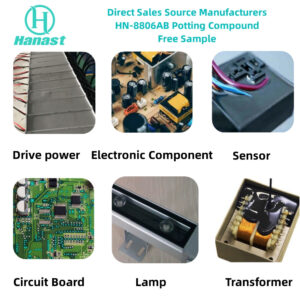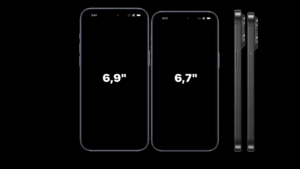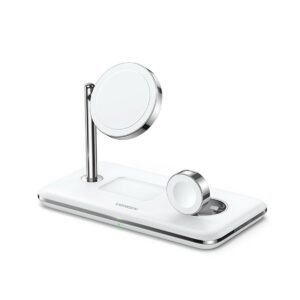MagSafe wireless charging is revolutionizing how we power our Apple devices. It’s a sleek, intuitive system that offers a faster, more convenient alternative to traditional wired charging. This guide explores the technology behind MagSafe, delving into its features, benefits, and potential drawbacks. We’ll compare it to other wireless charging standards, examine compatible devices, and look at future innovations in the field.
MagSafe’s unique magnetic design allows for precise alignment and fast charging speeds. This innovative approach not only streamlines the charging process but also enhances the overall user experience. The various accessories available further customize the charging experience, adding another layer of personalization to this technology.
Overview of MagSafe Wireless Charging
MagSafe wireless charging, developed by Apple, has revolutionized the way we charge our devices. It offers a seamless and intuitive charging experience, unlike other wireless charging standards that often require precise placement. This detailed overview explores the technology behind MagSafe, its strengths, and its place in the evolving landscape of wireless charging.MagSafe wireless charging utilizes a magnetic field to transfer power wirelessly.
This magnetic field, generated by specialized coils in the charging pad and the device, induces a current in the receiving coil, allowing for the efficient transfer of energy. The precise alignment facilitated by the magnets ensures optimal power delivery and minimizes energy loss.
MagSafe’s Fundamental Principles
MagSafe wireless charging leverages a unique combination of magnetic fields and inductive coupling. Powerful magnets precisely align the charging device with the receiver, guaranteeing consistent and efficient power transfer. This differs significantly from other wireless charging standards, which often require a more delicate alignment. The tightly controlled magnetic field minimizes energy loss, resulting in a faster and more efficient charging process.
Comparison with Other Wireless Charging Standards
MagSafe stands apart from other wireless charging standards, primarily Qi. While Qi is a widely adopted standard, MagSafe offers distinct advantages. MagSafe’s precise magnetic alignment leads to faster charging speeds and greater efficiency compared to the broader compatibility of Qi, which can vary in charging speed depending on the specific device and charging pad. Other wireless charging standards, while offering broad compatibility, often lack the speed and efficiency of MagSafe.
MagSafe wireless charging is super convenient, right? It relies on precise alignment, which is why the glass used in the charging coils is so crucial. AGC Glass, a major player in the industry AGC Glass , is known for its high-quality, durable glass that’s perfect for this type of application. This helps ensure a stable and reliable wireless charging experience for your devices.
Evolution of MagSafe Wireless Charging
Apple’s MagSafe technology has evolved from initial implementations to a more refined and integrated system. Early iterations focused on simple charging functionality. The modern implementation incorporates features like improved charging speeds and enhanced integration with other Apple products. For example, the integration with the Apple Watch charger and the iPhone 14 Pro Max exemplifies the evolving sophistication and efficiency of MagSafe.
Comparison Table: MagSafe Charging Speed vs. Other Standards
| Feature | MagSafe | Qi | Other Standards |
|---|---|---|---|
| Speed | Generally faster than Qi, potentially faster than other standards depending on the implementation | Variable, depends on the device and charging pad | Can be significantly slower than MagSafe or Qi |
| Efficiency | High, due to precise alignment and minimized energy loss | Variable, can be affected by alignment and device compatibility | Can be lower than MagSafe or Qi due to lack of precise alignment mechanisms |
| Cost | Generally higher than other wireless charging solutions, due to the specialized magnetic components. | Generally lower than MagSafe, but varies based on the charging pad | Generally lower than MagSafe and Qi |
MagSafe Charging Performance and Features
MagSafe wireless charging has quickly become a popular alternative to wired charging, particularly for Apple devices. Its innovative design and impressive performance have attracted many users. This section delves into the specifics of MagSafe charging, exploring its speed, safety, and various use cases.MagSafe charging is designed for efficiency and convenience, delivering a fast and reliable charging experience while prioritizing safety.
Understanding the technology behind its performance and the various factors affecting its usage is crucial for maximizing its potential.
Charging Speed and Efficiency
MagSafe charging typically delivers a relatively quick charging experience. While not as fast as some wired charging solutions, it provides a practical charging speed for everyday use. The charging speed is generally optimized for the device’s needs, balancing performance and safety. Apple’s MagSafe charging technology is designed to charge the device quickly without compromising safety.
Safety Features
MagSafe incorporates several safety features to protect users and devices. These safety features are crucial for maintaining a reliable and safe charging experience. These include temperature monitoring, which prevents overheating, and current limiting mechanisms that prevent excessive power delivery. This proactive approach to safety ensures a dependable charging process.
MagSafe vs. Wired Charging
MagSafe wireless charging offers a more convenient and aesthetically pleasing alternative to wired charging. However, wired charging generally provides faster charging speeds, particularly for high-power needs. MagSafe’s advantages lie in its seamless integration with Apple devices and its sleek, modern design. The choice between MagSafe and wired charging often depends on individual priorities and use cases.
MagSafe wireless charging is pretty slick, right? It’s all about that seamless integration, and the minimalist glass design really elevates the experience. Minimalist glass design emphasizes clean lines and a sophisticated aesthetic, which perfectly complements the sleek, almost invisible charging technology of MagSafe. The result is a truly premium, and intuitive, wireless charging solution.
Supported Charging Positions
MagSafe charging works effectively in various positions, owing to its precise magnetic alignment. The design allows for charging in numerous orientations, maximizing convenience. The magnetic alignment ensures stable charging regardless of the device’s position.
Effect of External Factors
External factors like metal objects can interfere with MagSafe charging. Proximity to metal objects, such as thick cases or metal surfaces, can slightly reduce the charging speed. This interference is a result of the magnetic field interactions. A case made of metal will obstruct the charging process more than a case made of a non-conductive material.
Charging Speed Table
| Scenario | Charging Speed |
|---|---|
| Device without a case | Typically fast, reaching near-maximum charging speed quickly. |
| Device with a thin, non-metal case | Charging speed is only marginally impacted, very close to the speed without a case. |
| Device with a thick, metal case | Charging speed is noticeably slower due to the interference of the metal. |
MagSafe Charging Compatibility and Issues
MagSafe wireless charging, while convenient, isn’t without its quirks. Understanding its compatibility with different devices and potential problems is key to getting the most out of this technology. This section details compatibility, common issues, and troubleshooting tips.MagSafe charging, primarily designed for Apple devices, generally offers a seamless experience. However, factors like the device model, case type, and even the charging mat’s condition can influence the performance.
Compatibility is not universal, and some devices may not support MagSafe charging, or might experience reduced charging speeds.
MagSafe Charger Compatibility with Different Devices
MagSafe chargers are primarily designed for Apple devices. This means iPhones, iPads, and Apple Watches equipped with the MagSafe connector are compatible. Third-party manufacturers often produce compatible cases that allow MagSafe charging to work as expected. Crucially, compatibility varies significantly between different models of these devices. For example, an iPhone 13 MagSafe charger might not be compatible with an iPhone 11 due to differences in the charging coils and magnetic configurations.
MagSafe wireless charging is pretty convenient, but sometimes you need a bit more than just a fast charge. Think about needing a quiet workspace, like when you’re trying to focus on that next big MagSafe wireless charging project. Soundproof glass, for example, could help create the perfect environment for your charging setup. Soundproof glass can help block out distracting noise, so you can keep your charging session uninterrupted.
In the end, MagSafe wireless charging is still a great option, even in a soundproofed space.
Potential Issues and Limitations of MagSafe Wireless Charging
Several potential issues can arise with MagSafe wireless charging. One common problem is the charging speed being slower than expected. This might be due to interference from metal objects, or a less-than-ideal placement on the charging pad. Another factor is the condition of the charging pad itself. A damaged or dirty charging mat can affect the charging process.
Furthermore, certain cases, especially those with thick or metallic components, might impede the magnetic connection, reducing charging speed or preventing it altogether.
MagSafe wireless charging is pretty slick, making it easy to top up your phone. But, have you considered the subtle haptic feedback that MagSafe offers when it connects? Haptic feedback adds a nice tactile element to the charging experience, subtly letting you know it’s working. It’s a small detail, but it elevates the overall MagSafe wireless charging experience.
Troubleshooting MagSafe Charging Problems
Troubleshooting MagSafe charging problems often involves a systematic approach. First, check if the device and the charger are properly aligned. Ensure the charging mat isn’t obstructed or positioned on a metallic surface. Next, try removing any cases or accessories that might be hindering the magnetic connection. If the problem persists, try a different MagSafe charger.
If that doesn’t work, contact Apple support for further assistance.
Importance of Proper Placement for Efficient Charging
Proper placement is critical for efficient MagSafe charging. The device should be centered on the charging mat and properly aligned with the magnetic field. Avoid placing the charger on metallic surfaces, which can interfere with the magnetic field. Keep the charging mat clean and free of obstructions to optimize the connection. The closer the device is to the center of the pad, the better the signal strength and charging speed.
Charging Experience with Different Cases
The type of case significantly impacts the MagSafe charging experience. Thin, non-metallic cases usually allow for seamless charging. However, thick or metallic cases might interfere with the magnetic connection, resulting in slower charging speeds or preventing charging altogether. Experimenting with different cases is often necessary to determine compatibility. Consider the thickness and composition of the case when choosing one that is compatible with MagSafe charging.
Common MagSafe Charging Problems and Solutions
| Problem | Solution |
|---|---|
| Charging is slow or not at all | Ensure the device is properly aligned and centered on the charger. Remove any cases or accessories that might be interfering. Try a different MagSafe charger, if possible. |
| Device does not stick to the charger | Check if the charging mat is clean and free of obstructions. Verify the charger is compatible with the device model. |
| Charging stops intermittently | Ensure the device is properly aligned and centered on the charger. Check for any metallic objects that might be interfering with the magnetic field. |
MagSafe Charging Future Trends and Innovations: MagSafe Wireless Charging

Source: esrgear.com
MagSafe wireless charging, while currently a popular technology, has room for significant advancement. Its integration with other technologies and addressing current limitations are key areas for future development. The market potential is substantial, driven by the desire for seamless, convenient, and powerful wireless charging solutions.
Potential Innovations in MagSafe Technology, MagSafe wireless charging
Several potential innovations could enhance MagSafe, leading to improved performance and user experience. These innovations could include more efficient charging coils, resulting in faster charging speeds. Increased charging power is crucial for compatibility with larger and more powerful devices. A more sophisticated charging protocol could also optimize charging performance for different devices, ensuring consistent and efficient charging across a range of devices and use cases.
Integration of MagSafe with Other Technologies
Future MagSafe technology may integrate with other wireless communication protocols. Imagine a scenario where MagSafe not only charges a device but also enables data transfer or even short-range communication with other devices, such as Bluetooth or NFC. This integration would greatly expand the utility and functionality of MagSafe beyond just charging. Another integration possibility is with augmented reality (AR) applications.
The precise positioning capabilities of MagSafe could enable more accurate and immersive AR experiences.
Addressing Current Limitations of MagSafe Charging
Current MagSafe charging limitations include its relatively low charging speeds compared to wired solutions, and the need for a precise alignment of the device and the charging pad. Future advancements could address these issues through improved coil technology, more sophisticated charging algorithms, and potentially more dynamic and responsive charging surfaces. This would enhance the charging experience, minimizing alignment issues and increasing overall charging efficiency.
This will likely be a major area of focus for future iterations of MagSafe technology.
Market Potential of MagSafe Wireless Charging
The market potential for MagSafe wireless charging is substantial, driven by factors such as consumer demand for convenient charging solutions and the potential for integration with other technologies. The Apple ecosystem’s existing user base is a significant driver of adoption. Moreover, the ongoing development of wireless charging standards and adoption by other manufacturers creates a wider market opportunity.
The potential for significant growth and adoption is significant, and it’s a market that other companies are actively competing in.
Potential Future MagSafe Features
| Feature | Description |
|---|---|
| Adaptive Charging | Automatically adjusts charging power based on the device’s battery level and other factors, maximizing efficiency and minimizing wear. |
| Multi-Device Charging | Enables simultaneous charging of multiple devices, potentially with different charging protocols. |
| Enhanced Positioning Accuracy | Improves the accuracy of device alignment, reducing the need for precise positioning and increasing the reliability of charging. |
| Reverse Wireless Charging | Allows the MagSafe charger to wirelessly charge other compatible devices, such as smaller accessories or even other smartphones. |
| Integrated Data Transfer | Facilitates fast and seamless data transfer between the device and the charging pad, potentially eliminating the need for cables. |
MagSafe Charger Design and Aesthetics
MagSafe chargers, beyond their core function of wirelessly charging iPhones, have evolved into a design element that reflects Apple’s commitment to aesthetic harmony and user experience. The design choices are crucial in establishing a positive user interaction, influencing both the device’s perceived value and its seamless integration into various environments.MagSafe chargers are not merely functional accessories; they are designed to complement the overall aesthetic of the iPhone and the user’s surroundings.
The chargers’ appearance and materials play a significant role in the overall user experience.
MagSafe wireless charging is pretty neat, right? It’s a cool way to top up your phone’s battery without any cables. This technology, though, relies on a special kind of glass for the charging coils, which is quite similar to the obscure glass used in some high-tech applications. Check out Obscure glass to learn more about this fascinating material and its properties.
Ultimately, this obscure glass is a crucial part of the smooth and efficient MagSafe wireless charging experience.
Material Selection and Benefits
The materials used in MagSafe chargers contribute to their overall design and functionality. Common materials include aluminum, glass, and various polymers, each offering specific advantages. Aluminum, for example, is a strong and lightweight material that can be molded into various shapes, contributing to the charger’s structural integrity and overall aesthetic. Glass, with its sleek and modern look, adds to the charger’s premium feel, while polymers offer flexibility and cost-effectiveness, contributing to lighter weight and potential customization.
Aesthetic Considerations in Design
Aesthetic considerations play a crucial role in the design process. The chargers’ form factor, color options, and surface textures are carefully considered to create a cohesive design language across the Apple ecosystem. For example, the color palette of the MagSafe chargers often mirrors the color choices available for the iPhones themselves, fostering a sense of visual harmony. The smooth and rounded edges of many MagSafe chargers contribute to a sense of sophistication and minimize sharp, potentially uncomfortable edges.
Impact on User Experience
The design of MagSafe chargers directly impacts the user experience. A visually appealing and well-integrated design can enhance the user’s perception of the device’s quality and elevate the charging experience. Conversely, a poorly designed charger can detract from the overall experience. The charger’s subtle aesthetic choices, such as the use of subtle lighting or intricate patterns, contribute to the overall sense of sophistication and elevate the user’s experience.
Different MagSafe Charger Designs and Aesthetics
| Design | Material | Aesthetics |
|---|---|---|
| Compact, minimalist | Aluminum, glass | Sleek, modern, complements various iPhone colors |
| Elevated, slightly larger | Glass, polymer | Premium feel, distinct from the phone, but compact enough for ease of use |
| Integrated, slim design | Aluminum, polymer composite | Blend seamlessly with iPhone, promoting a clean, integrated aesthetic |
The table above highlights some examples of MagSafe charger designs, showcasing how material choices and design features can influence the aesthetic appeal and overall user experience. The sleek lines, smooth surfaces, and color options create a cohesive aesthetic, aligning with Apple’s overall design philosophy.
Epilogue
In conclusion, MagSafe wireless charging stands as a significant advancement in portable device charging. Its seamless integration with Apple devices and innovative features set it apart from other wireless charging standards. While some limitations exist, the future of MagSafe looks promising, with potential for further advancements and integration with other technologies. Ultimately, MagSafe represents a compelling alternative to wired charging, offering speed, convenience, and a sophisticated user experience.
Frequently Asked Questions
What are the common issues with MagSafe charging?
Some users report inconsistent charging speeds, particularly with certain cases or in specific charging positions. Poor placement can also hinder the charging process. If the charger isn’t properly aligned with the device, charging may be slow or interrupted. Occasionally, there might be compatibility issues with older or non-MagSafe compatible cases.
How does MagSafe charging compare to Qi charging?
MagSafe uses a precise magnetic connection for faster, more efficient charging compared to Qi. Qi relies on inductive coupling, which can be less precise and potentially slower. MagSafe’s design allows for more direct and efficient energy transfer.
Can I use a MagSafe charger with non-Apple devices?
No, MagSafe chargers are designed specifically for Apple devices and are not compatible with other brands’ products.
What are some of the safety features of MagSafe charging?
MagSafe chargers are designed with safety features like temperature regulation and over-current protection to prevent overheating and damage to your device.




